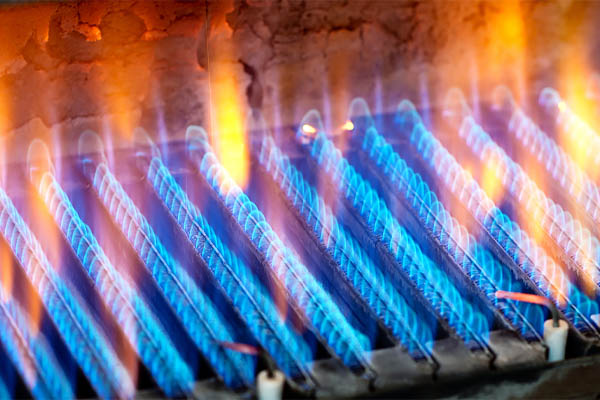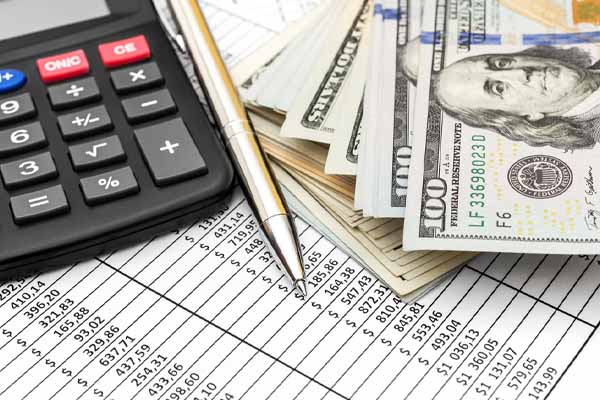Contents
As per Energy Star, your home’s cooling and heating system is responsible for almost half of your total energy costs. One method you can use to reduce your energy cost is to make informed decisions on your system’s maintenance, replacements, and repairs. For heating systems, you should familiarize yourself with the term “AFUE” because it directly impacts your energy consumption and bills. This article discusses the AFUE rating in more detail.
The Definition Of AFUE Rating

The American Society of Heating, Refrigerating and Air-Conditioning Engineers, or ASHRAE, created the Annual Fuel Utilization Efficiency (AFUE). It is a percentage that basically measures a heating system’s energy efficiency. Generally, AFUE can be defined as the ratio of heat compared with the amount of fuel that the heating unit consumed.
You can calculate the AFUE rating by simply dividing the fuel amount the unit uses by the amount of heat produced, usually in BTUs or British thermal units. For instance, if your system has an 85% AFUE value, it translates to a unit using 85% of the fuel energy for heating while losing the remaining 15% to inefficient chimneys, burners, and other areas. However, remember that AFUE doesn’t account for the heat lost in HVAC pipes and ducts, which may be a significant amount. The US Department of Energy (DOE) states that ducts in unconditioned areas like attics and garages can lose as much as 35% of the furnace energy output.
A high AFUE value often means higher energy efficiency and vice versa. Simply put, you can enjoy reduced fuel costs with high AFUE ratings. It should be noted that electric heat pumps in heating mode don’t use AFUE and use Heating Season Performance Factor (HSPF) instead. The US DOE currently uses AFUE as a national measurement standard to denote a heating system’s combustion efficiency.
The DOE also sets the minimum AFUE ratings for gas heating systems to encourage energy efficiency across the US. It is currently at 80% for the Southwest and 90% for the Northern regions. As a result, nearly all new furnaces made today have 90% or higher AFUE ratings.
Related Article: Top HVAC Installation Mistakes to Avoid
How To Find The AFUE Rating
The Federal Trade Commission mandates heating system manufacturers to indicate the AFUE ratings of their equipment. This is to help consumers make informed decisions when buying a boiler or furnace. Most manufacturers put this detail on a yellow tag known as the EnergyGuide label, which can be found on most electrical appliances. If this rating cannot be found on the EnergyGuide label or you can’t find the label, look it up on the manufacturer’s or retailer’s website or your owner’s manual. Keep in mind that the efficiency of heating systems usually declines as time passes. This means that the printed AFUE rating may be higher than the actual rating of the heating unit. Have an HVAC professional measure the AFUE rating of your system so you get the exact figure.
Related Article: 7 Reasons Your Filter Isn’t Improving Your Indoor Air Quality
What Is A Good AFUE Rating?
Per the DOE, a good AFUE rating is higher than 80% and 90% for the Southwest and Northwest regions, respectively. Heating systems usually become less efficient over time, with underperforming or old heaters having AFUE ratings as low as 56% to 70%. The DOE standards require that new systems have at least 78% AFUE ratings. Heating systems are classified under three categories based on their AFUE ratings: high-efficiency (90% or higher), mid-efficiency (80% to 89%), and low-efficiency (less than 80%). The highest AFUE ratings are from 97% to 98.5%, with the remaining percentage accounting for the inefficiencies linked with heating systems like firing and distribution losses.
Related Article: Ductwork Makes Banging Noise: Causes & Solutions
How Can Homeowners Use AFUE Ratings?

The efficiency of the furnace operation is measured through the AFUE rating. The efficiency generally drops as time passes, so there’s a high chance that older and non-efficient furnaces have lower AFUE ratings. Heating systems sold in the US before 1975 weren’t mandated to meet a minimum AFUE rating. It was in 1987 that the DOE mandated that heating systems should have a minimum rating of 78%, which was later increased to 80% in 2015.
Furnaces that’s been in operation for 15 years or more are often no longer efficient and are costly to operate. Even getting a furnace replacement that has a low efficiency at an 80% AFUE rating will provide higher energy savings and reduced energy bills. You can select a furnace with a higher AFUE rating to get more savings. You can find systems with as high as 98.5% AFUE ratings, which are the most efficient ones in the market today. It is important to note that the AFUE rating you selected will significantly affect your energy expenses and carbon footprint.
Related Article: Top Signs Your Furnace Is Overheating
Should I Buy A High-Efficiency Furnace?

You need to consider a few factors to determine the answer to this query. The first factor is the region you live in. For instance, living in a cold area requires you to use a furnace often, so it is best to go for a high-efficiency furnace as it can provide higher energy savings down the road. Notably, a high-efficiency furnace can provide as much as 18.5% efficiency than low-efficiency furnaces. According to several studies, US households spend around $600 or more on heating annually. You can save up to $111 each year with a high-efficiency furnace. Think of the savings that you accrue over time.
The second consideration is your budget. High-efficiency furnaces have an average cost of around $1,000 more than their mid-efficiency counterparts. However, furnaces generally are expected to last for 15 to 20 years. Therefore, you will have more than $1,600 in savings if your high-efficiency furnace saves you $111 for 15 years. This means you can recoup the extra cost of installing the heating system.
Related Article: Common Furnace FAQs
Features of High AFUE Furnaces
Furnaces with high AFUE ratings generally have advanced technologies and features to increase energy efficiency. Here are several of the outstanding features that can be found on such systems:
- Better air filtration systems
- Secondary heat exchanger
- Variable-speed blowers
- Variable-heat output
- Direct spark ignition systems
Related Article: Signs You Need Better Air Quality At Home
Conclusion
AFUE is the rating used for measuring the energy efficiency of a heating system. It is utilized by the US Department of Energy to set standards for furnace efficiency in that all furnaces sold in the country should have a minimum of 80% AFUE rating.
Tevis Energy’s sister company, Modern Comfort, performs HVAC installations, replacements, tune-ups, and more. Our technicians can provide you with expert HVAC services to ensure that your system provides you with the comfort and efficiency you deserve. Call now to schedule an appointment.
Related Article: When To Repair Vs. Replace Your Heating System
Give Tevis Energy A Call For All Your HVAC Needs

Tevis Energy offers high-quality heating and cooling services in central Maryland and southern Pennsylvania. Our professionally certified technicians are the best when it comes to HVAC replacements, tune-ups, repairs, and installations. Rest assured, all our techs have extensive experience, knowledge, and skills to service your HVAC system correctly.
Tevis Energy offers quality and cost-effective heating and cooling service. Our maintenance services help improve energy efficiency and comfort in your home while reducing your home’s heating expenses. We can suggest the most suitable HVAC repair or replacement system that best fits your needs and budget. We back all of our work with a guarantee to ensure your satisfaction. Call today to schedule a service appointment and receive a free, in-home estimate.
You can click here to contact us now or call us at (410) 876-6800 to find out more! Click the link to view our service area.
Posted in Blog
Tags: